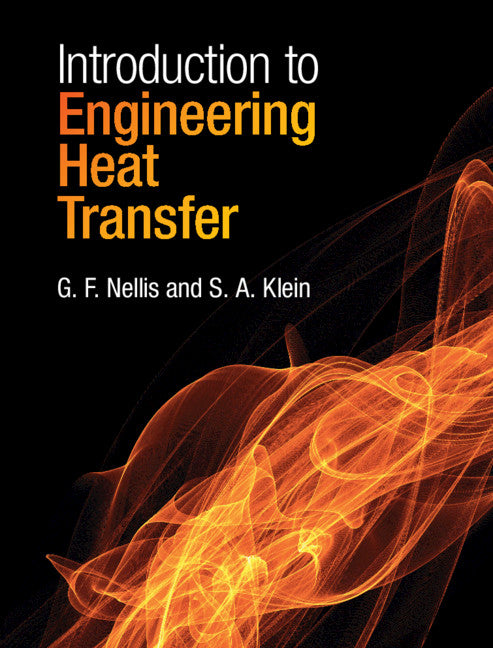Freshly Printed - allow 4 days lead
Couldn't load pickup availability
Introduction to Engineering Heat Transfer
Equips students with the essential knowledge, skills, and confidence to solve real-world heat transfer problems using EES, MATLAB, and FEHT.
G. F. Nellis (Author), S. A. Klein (Author)
9781107179530, Cambridge University Press
Hardback, published 30 July 2020
895 pages, 756 colour illus. 771 exercises
25.1 x 19.3 x 4.8 cm, 2.35 kg
'I've practiced heat transfer for 30 years as an engineer in industry, a scientist at a national lab, and an academic. Midway through my career, I studied Nellis and Klein's pedagogically pioneering text. It was only then that I obtained a firm grasp of the subject matter. Feedback from students in my classes on their book has been remarkably terrific.' Marc Hodes, Tufts University, Massachusetts
This new text integrates fundamental theory with modern computational tools such as EES, MATLAB®, and FEHT to equip students with the essential tools for designing and optimizing real-world systems and the skills needed to become effective practicing engineers. Real engineering problems are illustrated and solved in a clear step-by-step manner. Starting from first principles, derivations are tailored to be accessible to undergraduates by separating the formulation and analysis from the solution and exploration steps to encourage a deep and practical understanding. Numerous exercises are provided for homework and self-study and include standard hand calculations as well as more advanced project-focused problems for the practice and application of computational tools. Appendices include reference tables for thermophysical properties and answers to selected homework problems from the book. Complete with an online package of guidance documents on EES, MATLAB®, and FEHT software, sample code, lecture slides, video tutorials, and a test bank and full solutions manual for instructors, this is an ideal text for undergraduate heat transfer courses and a useful guide for practicing engineers.
1. Introduction
2. One-dimensional, steady state conduction
3. Extended surface problems
4. Two-dimensional, steady-state conduction
5. Lumped transient problems
6. Transient conduction
7. Convection
8. External forced convection
9. Internal forced convection
10. Free convection
11. Boiling and condensation
12. Heat exchangers
13. Mass transfer
14. Radiation
Appendix A. Thermophysical properties of solids
Appendix B. Thermophysical properties of liquids
Appendix C. Thermophysical properties of gases
Appendix D. Thermophysical properties of saturated liquids
Appendix E. Answers to selected problems
Index.
Subject Areas: Aerospace & aviation technology [TRP], Mechanics of solids [TGMD], Chemical engineering [TDCB], Nonlinear science [PBWR]


